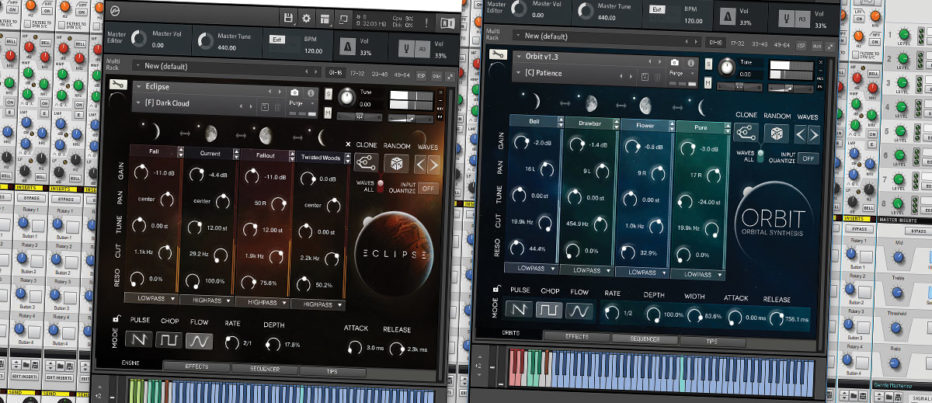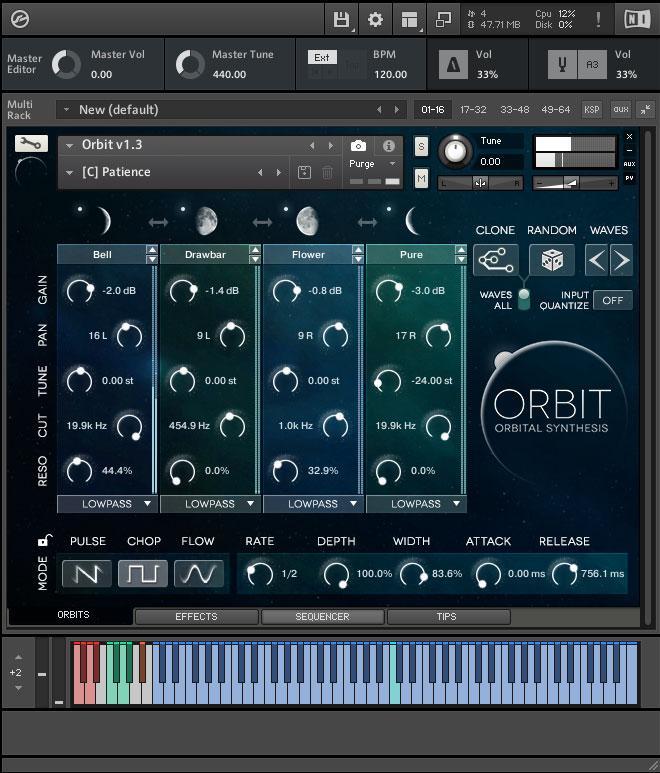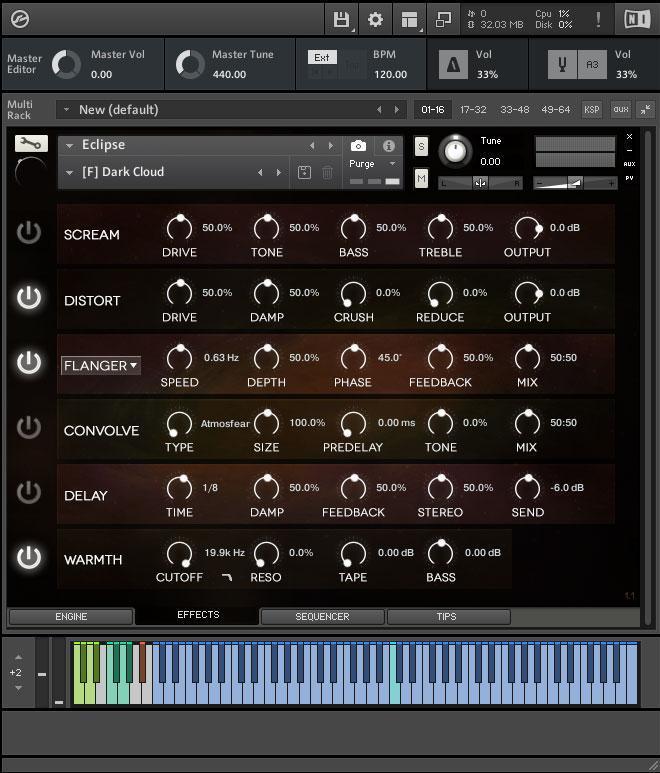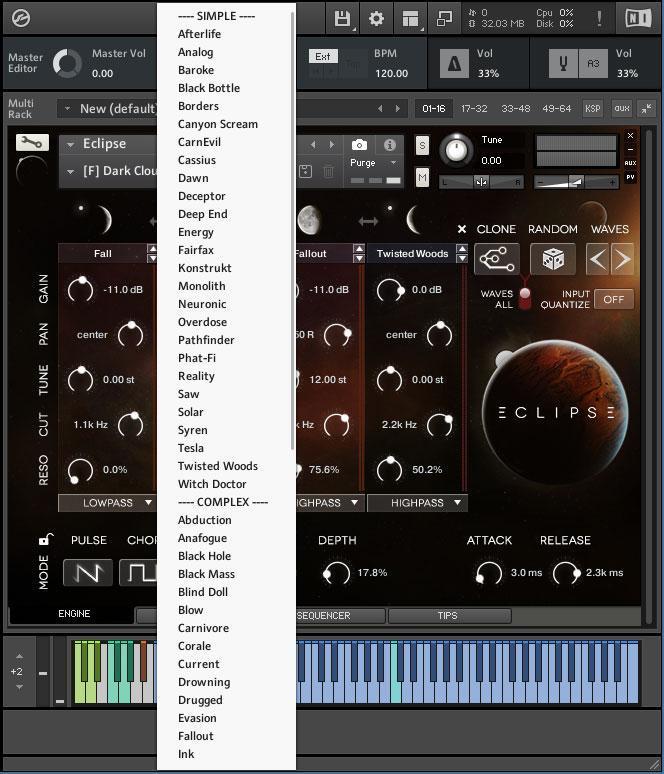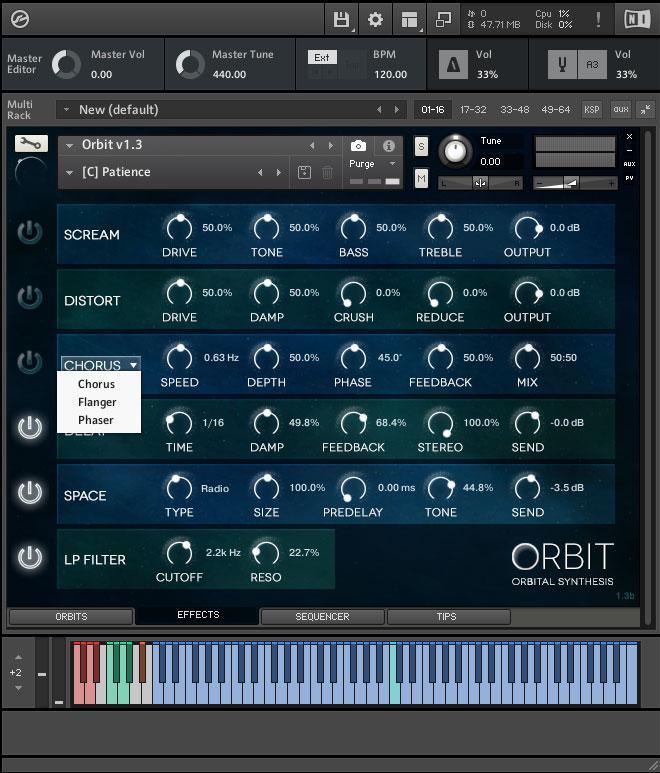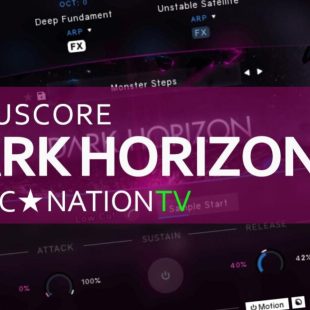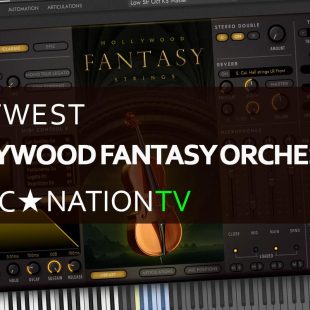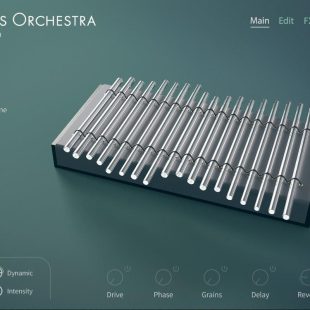WIDE BLUE SOUND: ORBIT & ECLIPSE – THE LUNAR TWINS
Hi, and thanks for joining us this week as we look into Wide Blue Sound’s Orbit and Eclipse Kontakt-based atmospheric sample instruments. These are twin libraries with similar GUI and workflow designs but with contrasting sounds that look to complement each other well.
This is a competitive sector of the market so it’s always going to be tough to stand out amongst the crowd. Wide Blue Sound has offered what looks to be a fairly standard platform with a unique workflow and space theme. These twin libraries are separate products, but close enough in functionality to be reviewed as a pair.
Let’s get them both installed and fired up.
Overview
Both Orbit and Eclipse are Kontakt-based sample libraries sharing similar GUI designs and functionality. With sound designers in mind, the libraries are intended for creating long evolving pad-like textures, though some quite radical results are possible with the synthesis controls provided.
Each features a four-slot phrase sample player with envelope and LFO controls, effects rack and pattern sequencer. The libraries are played with a combination of contrasting samples and modulating effects to produce ethereal, slowly evolving soundscapes.
Both libraries are NKS enabled so perfectly compatible with Native Instruments hardware.
Both Orbit and Eclipse share the same front panel design with gain, pan, cutoff and res controls for each of the four sample slots (or “Orbits”). A simplistic LFO section, global randomisation and sample clone or shifting controls. Samples can be swapped around slots or disabled using the moon-themed toggle switches at the top of each strip.
You will become familiar with the planetary analogy in short order, as everything is space themed.
Of the two libraries, Orbit tends to be softer, more ethereal textures; whereas Eclipse is more aggressive and gritty. Though the instruments are capable of creating similar motifs, generally you would choose Orbit for smoother pads and Eclipse for harsher, more synthetic-sounding results.
In The Studio
The very basic premise of Orbital and Eclipse is to synthesise up to four selected wave samples by a global LFO. Since the included selection of samples is wildly varied, this rather simple process is capable of producing some quite extreme results, though usually down to a combination of trial and error.
Though a considered methodical approach may work, I found the best results came from experimentation, particularly with the randomisation and mode-switching controls.
Firstly is the LFO itself. You can choose between pulse, chop and flow as your starting modulator – saw, square and sine to us old-school synth-heads out there. Each has rate, depth, attack and release, with the punch option including a pulse (sustain) dial and a width for the chop section (pulse width).
Each of the four sample slots can be swapped out from a collection of curated samples, then moved, tuned, panned or filtered as you like. A cool randomise feature allows for a roll of the dice type potluck, and you can clone or move sample slots around to trial different variations of setting for each.
Samples sound like they’re loaded slightly offset from each other, or perhaps the key trigger starts at a different point along the sample each time. Either way, you can’t sync samples to trigger simultaneously.
At the top of each sample slot is an eclipsed moon icon indicating if a channel is active. You can swap slots around using the arrows between the moons which results in some quite unusual effects due to this slight offset of the sample. Presets can be completely transformed sometimes by just moving elements around.
There is no option to remove a slot from the LFO path – which is a shame. This means that the LFO effect is global whether you want it or not.
The included effects rack features half a dozen stock Kontakt effects with a tendency towards distortion and modulation. The excellent space/convolve effect offers a good range of tailored reverb-like effects. I particularly like Space Drops and Suspense presets, but there is a number of great settings to choose from. The Type control is a little annoying to dial through. Personally, I would prefer a drop-down list.
Though you can opt for basic distortion effects, the emphasis is on you to add dimension and width with delay, modulation and reverb effects, further enhancing the overall ethereal quality of the sound.
The pattern sequencer is a fairly simple automation step sequencer for controlling parameters throughout the library. You can, for instance, step the intensity level of the LFO depth, or ping-pong the pan settings, etc.
Unfortunately, there is no way to create macros to manipulate multiple controls at once. Though there are articulation controls for enabling the sample slots or sequencer tracks, all of the interface manipulations must be performed one by one with the mouse. Each control and setting is assignable to a MIDI controller, which makes for more hands-on capabilities, particularly for live performances.
As mentioned before, there is a slight sample offset when loading into each of the slots. I would prefer a dedicated control for offsetting the sample attack to counter this. Some options for splitting the sample slots out over your keyboard would be nice for manually introducing elements of the loops as you please or changing the individual note pitch on the fly.
The Sound
On the whole, the basic presets in both libraries sound fairly plain. There are plenty of weird loops and FXs to use, but nothing groundbreaking or pioneering we haven’t heard a lot already. Loops do develop and open up over time, but not drastically so.
The effect presets and LFO modulation give both libraries a certain “spaciness”, but I am not convinced that the sound theme is completely out of this world. Don’t get me wrong, it sounds fine, but more like a bunch of Korg Wavestation presets than an immersive interstellar experience.
Without a doubt, the trick is to scratch-built patches. Fortunately, this is easy to do and quite intuitive. Most of the workflow is performed on the front page, with FX and sequencing adding a global layer of movement over your creation. Previewing and bringing samples in one by one worked best as it takes time to “feel out” each sample and match it with others you have curated.
The sample browser is separated by mood which helps, though there appears to be only a hundred or so to choose from – which is possibly beneficial because a limited choice can increase productivity.
Starting with your choice of LFO mode which defines the basic action of your sound, building up sample slots is a matter of trial and error with guidance from the sample category.
I found a heavy hand drew too much attention to the randomness. A gentle approach worked better, especially for atmospheric soundscapes. If you are wanting a jumbled wall of noise, then hold the sustain pedal and bash the keyboard arbitrarily. For anything more structured, a gentle and considered approach works better.
Though there is a tonal difference between Orbit and Eclipse, in reality, they both sound basically the same or at least they are capable of creating largely the same kind of sound. I think this would have been better released as a single product with light and dark patches.
Playing through many of the included wave samples, there is a good selection to choose from of what mostly sound like sampled synth patches with varying degrees of effect processing. Some sounds are fairly modular-analogue sounding, but there’s nothing distinctly organic.
The system relies on affecting the modulation, sequencing and LFO tools to bring the sounds to life and without macro controls you need track automation to push it to the limits.
A major issue for me is the lack of key trigger sync. Unless your timing is impeccable, each time you trigger a held note the samples play at their own pace resulting in a confusing rabble of sound. This layering of sounds and modulation effects all adds to what usually becomes largely a mess of echoes and reverb.
Having said that, there are moments when everything comes together well – the LFO is timed just right and the samples are harmonious with each other.
While the included effects rack is adequate, both instruments benefit from adding high-quality 3rd party processing such as Eventide’s amazing Blackhole. I found excellent results from more boutique 3rd party effects, such as Melda Productions M effect range and the excellent Unfiltered Audio SpecOps, Zip and Sandman plugins.
Basically, the weirder the effect, the better if worked with Orbit or Eclipse.
Conclusion
Overall these twin libraries offer a good amount of usable if slightly lacklustre results. There is a generous amount of content here and savvy producers will surely get value. However, the hum-drum sounds and a rather simplistic workflow make both Orbit and Eclipse feel like a poor man’s Xosphere.
The libraries are certainly capable of adding dimension to a project, but on their own, they need a lot of good luck and heavy reliance on 3rd party processing to step up.
At $149 for Eclipse and $199 for Orbit, then a further $29 for each of the new expansions this feels rather pricey considering the competition. A bundle deal for $298 (or $356 with expansions) lessens the blow but this is expensive for what essentially should be a single product. This places Wide Blue Sound directly in competition with the heavy hitters in the market (Output, Sample Logic, Spitfire Audio), which quite frankly outshines them both.
New to the range is the introduction of “Skypad”, keeping with the space analogies. This iPad app allows tactile control of the library from your tablet. I wasn’t able to test this, but I can see Skypad being a notable point of difference and beneficial to creating a unique tactile experience, particularly for live performance.
A solid, if somewhat uninspired instrument duo with some good features for live performance with the new Skypad app. Some genuine sparks of inspiration are inevitable, but at this price buyer’s remorse would ruin the moment for me. Wait for the sales.
Check out the Wide Blue Sound website for more information www.widebluesound.com

Like the review? Shout us a cup of coffee!

